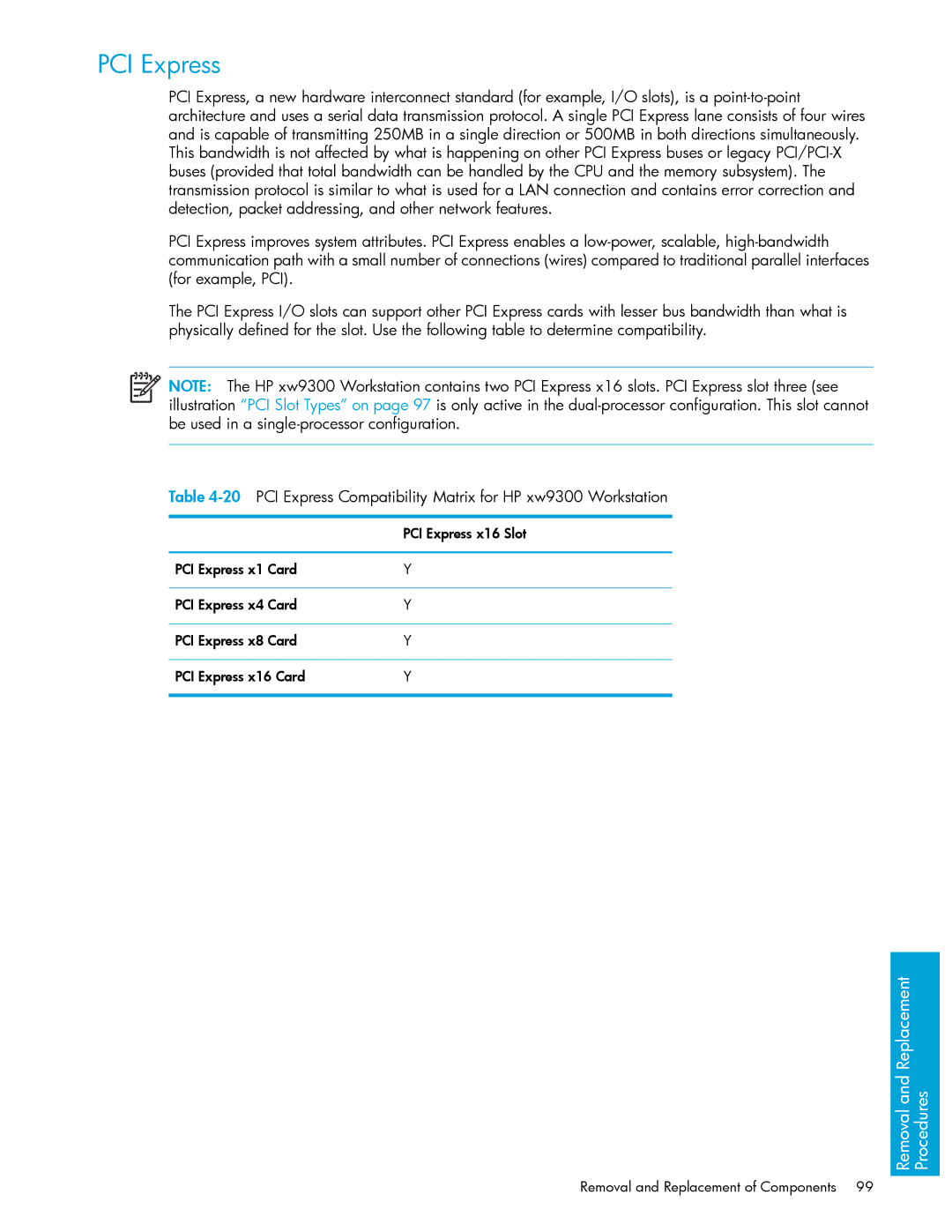
PCI Express
PCI Express, a new hardware interconnect standard (for example, I/O slots), is a point-to-point architecture and uses a serial data transmission protocol. A single PCI Express lane consists of four wires and is capable of transmitting 250MB in a single direction or 500MB in both directions simultaneously. This bandwidth is not affected by what is happening on other PCI Express buses or legacy PCI/PCI-X buses (provided that total bandwidth can be handled by the CPU and the memory subsystem). The transmission protocol is similar to what is used for a LAN connection and contains error correction and detection, packet addressing, and other network features.
PCI Express improves system attributes. PCI Express enables a low-power, scalable, high-bandwidth communication path with a small number of connections (wires) compared to traditional parallel interfaces (for example, PCI).
The PCI Express I/O slots can support other PCI Express cards with lesser bus bandwidth than what is physically defined for the slot. Use the following table to determine compatibility.
NOTE: The HP xw9300 Workstation contains two PCI Express x16 slots. PCI Express slot three (see illustration “PCI Slot Types” on page 97 is only active in the dual-processor configuration. This slot cannot be used in a single-processor configuration.
Table 4-20PCI Express Compatibility Matrix for HP xw9300 Workstation
| PCI Express x16 Slot |
| |
PCI Express x1 Card | Y |
| |
PCI Express x4 Card | Y |
| |
PCI Express x8 Card | Y |
| |
PCI Express x16 Card | Y |
| |
Procedures
Removal and Replacement
Removal and Replacement of Components 99

